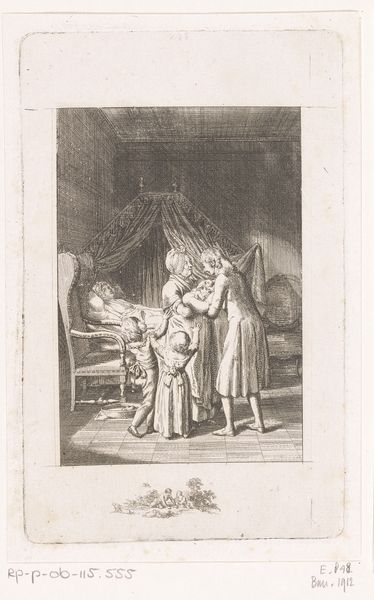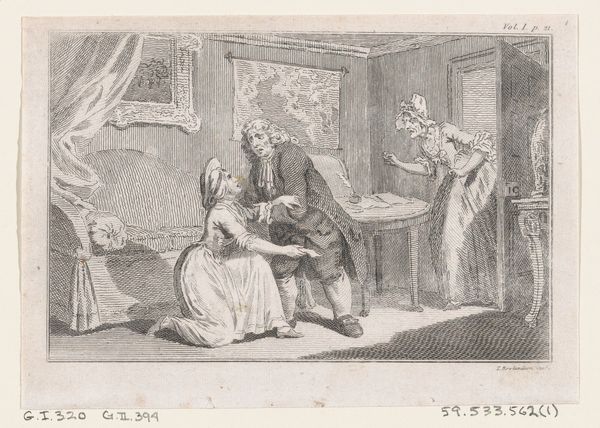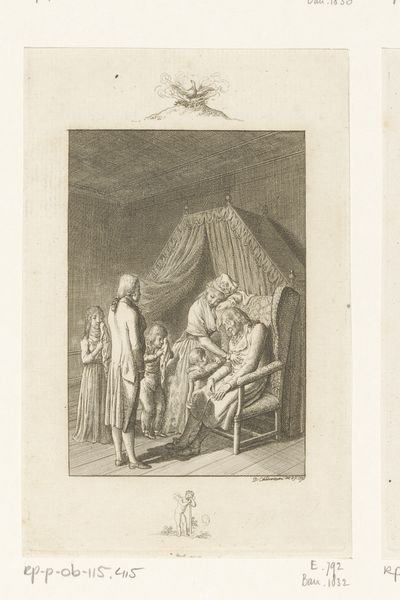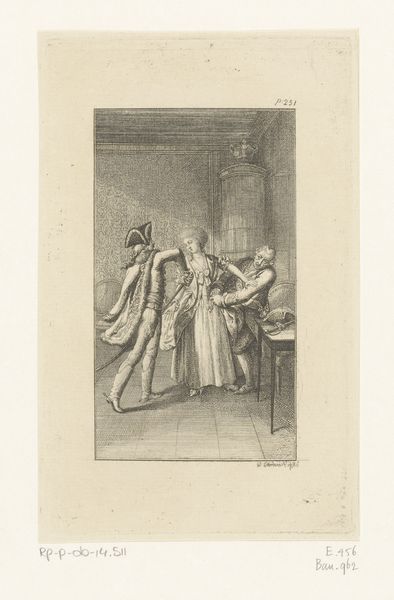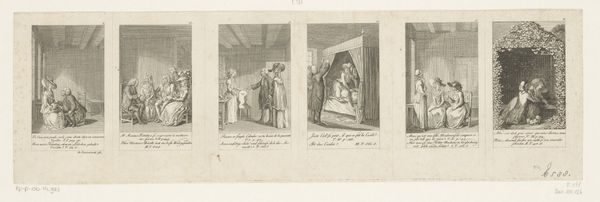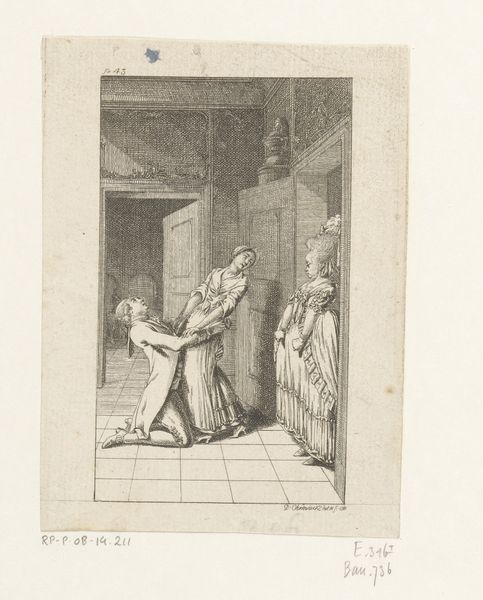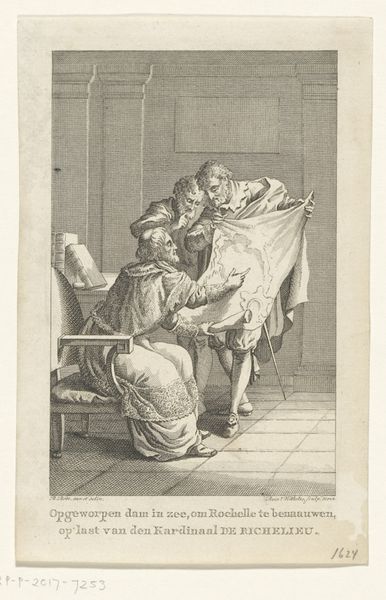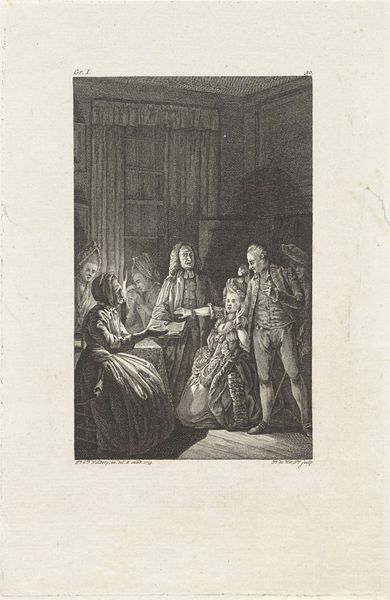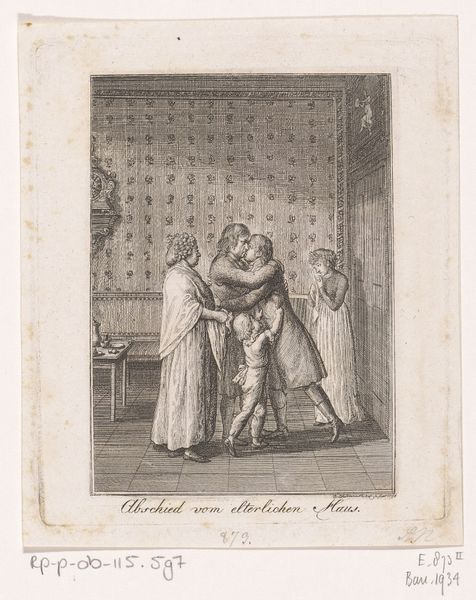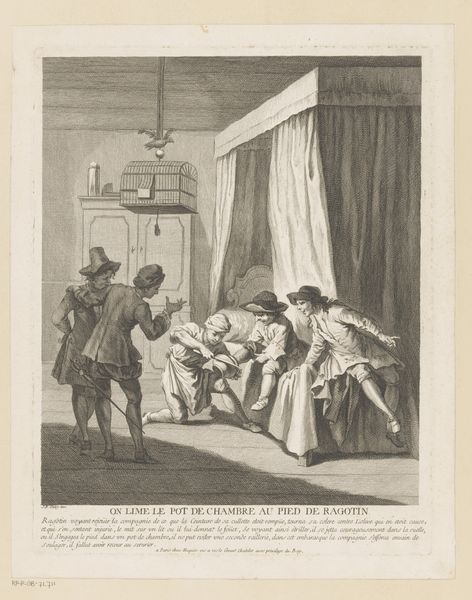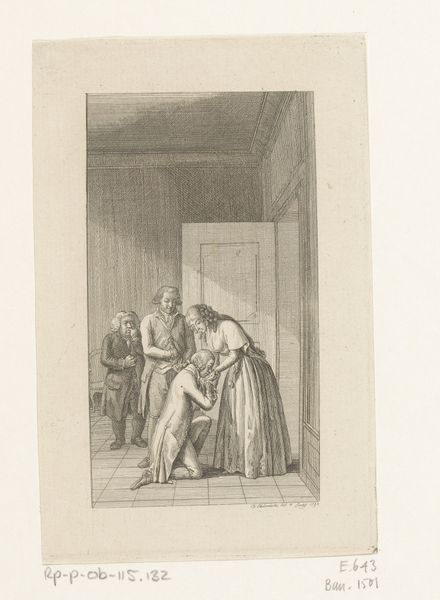
Dimensions: height 163 mm, width 104 mm
Copyright: Rijks Museum: Open Domain
Daniel Nikolaus Chodowiecki made this print, titled ‘Belford bezoekt Clarissa in de kerker’, which translates to 'Belford visits Clarissa in the dungeon', sometime in the late 18th century. Chodowiecki was a Huguenot, a French Protestant, living in Berlin at a time when religious and political identities were intensely policed. This image depicts a scene of confinement and despair. A woman, presumably Clarissa, is slumped over a table in what appears to be a dungeon, while a man and two figures stand nearby. What does it mean to represent the oppression of a woman within the domestic sphere during the Enlightenment, a period that emphasized reason and individual rights? Chodowiecki, through his detailed engravings, was able to disseminate powerful images that navigated the complexities of identity, morality, and social justice in a rapidly changing world. He asks us to consider who is confined and who is free, both physically and socially, reflecting the emotional and societal constraints experienced by women in the 18th century.
Comments
No comments
Be the first to comment and join the conversation on the ultimate creative platform.

